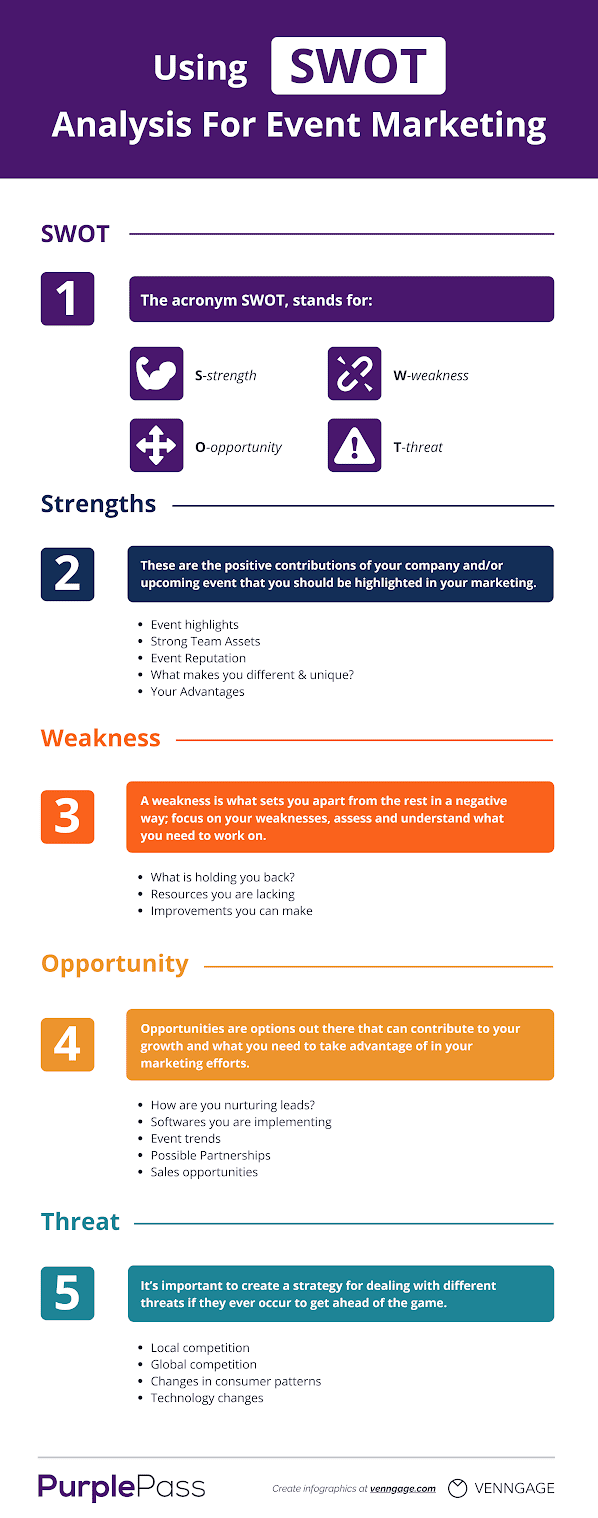Every successful business starts with a plan of action before diving into the industry, whether that’s setting goals and objectives, keywords, competitor research, or creating a story brand.
One effective research tool for businesses just starting out or trying to get a better grasp of their challenges ahead is to conduct a SWOT Analysis.
What is a SWOT Analysis for businesses?
SWOT is an extremely helpful analysis tool for defining your approach to the industry. SWOT stands for:
- Strength
- Weakness
- Opportunity
- Threat
This form of analysis may be ancient to some advanced marketers but still a highly effective tool for discovery. In each area, a business can uncover where their strengths and weaknesses lie, growth opportunities available to them, and get a better understanding of their competition.
What are the benefits of using a SWOT Analysis for your business?
The idea is to generate a complete picture of your marketplace in order to build a solid foundation for your business. There is no such thing as doing too much research or preparation. The idea of a SWOT analysis is to take all this research and organize that information into four categories that your team should focus on. Each category is designed to drive awareness to areas that might have been overlooked or for discovering weaknesses in the business model.
According to Purplepass, an event management software, conducting a SWOT analysis is beneficial for:
- Strengthening your business strategy and model
- Growing your awareness for external threats
- Limiting surprises from unexpected issues
- Clearly outlining where you shine (effective marketing)
- Learning more about your story brand
How to use a SWOT analysis for your business?

In the following, we will briefly discuss each category and how to apply it to your business.
1. Strengths
Pretty simple, right?
Strengths are what a company is good at or the services they thrive in. Strengths are everything you can control, the services you offer, excellent customer service, quality care, etc. This is everything positive about your business and the solutions you are offering to your customers.
Also Read: Communication Skills Every Leader Should Have
It’s important to identify the business’s strengths in order to market your business and where you shine! Things to consider might include:
- Qualities that make you better than your competitor
- What your business is good at or does well
- Internal resources
- Past successes or testimonies
- Services or tangible products you can provide compared to others
2. Weaknesses
This is the one no one wants to talk about, and actually, some have trouble identifying. Why? Because no one wants to talk about their flaws and show vulnerability.
We need to get past this.
It’s crucial, as a business, to recognize where you can improve in order to see future growth and not remain stagnant.
So ask yourself, what sets you apart from your competition negatively? What is holding you back? Here are some more questions that can help your business identify where there might be breaks in the fence.
Also Read: 5 Daily Business Habits That Equal More Sales
- Is there something/a product or topic you’ve received multiple complaints about?
- What are obvious things you can identify that are holding you back? Your location? Target market? Other competitors? Budgets?
- What resources are you lacking?
- In what areas are your competitors better than you?
If available, this would also be a good time to go through previous reports and stats to distinguish areas of improvement.
3. Opportunities
Is there an emerging need for your services or products? Are you receiving full coverage or doing effective marketing campaigns for your business?
Opportunities are options you have out there that can contribute to growth you’re not currently taking. This category is all about discovering ways you can improve your businesses and untapped resources.
For example, are you marketing your business in every way? Are you updated on all the current trends? How are you nurturing your leads?
4. Threats
Threats, a.k.a, something we can’t really control. Our competition. The marketplace. The economy.
It’s crucial that part of your business model includes a plan B, C, D, Z of ways to deal with external factors. When building out this part of your strategy, consider:
- Emerging competition
- Dealing with negative press
- How technology is developing in your industry
- Consumer behaviors and patterns
- The changing environment
The idea of conducting a SWOT analysis is to identify how your company can grow and while dodging roadblocks along the way. Sometimes we don’t want to face the ugly truth when it comes to a business’s weaknesses and things beyond our control. However, this simple exercise is necessary in order to increase this awareness, and better prepare you for the challenges up ahead.
A SWOT analysis is a powerful tool for truly evaluating your company, no matter the size. Remember, every business analysis will look different, with some overlap in between different categories. Just take this time to be completely transparent about yourself and your business, and don’t be afraid to explore all your options.


